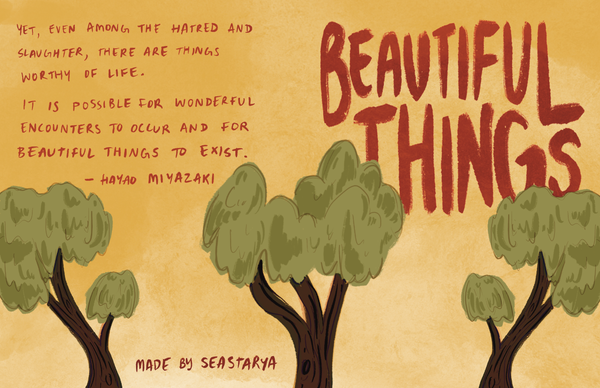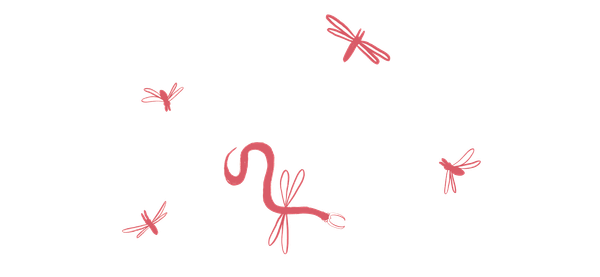on shared skies
an essay by Darien Fiorino
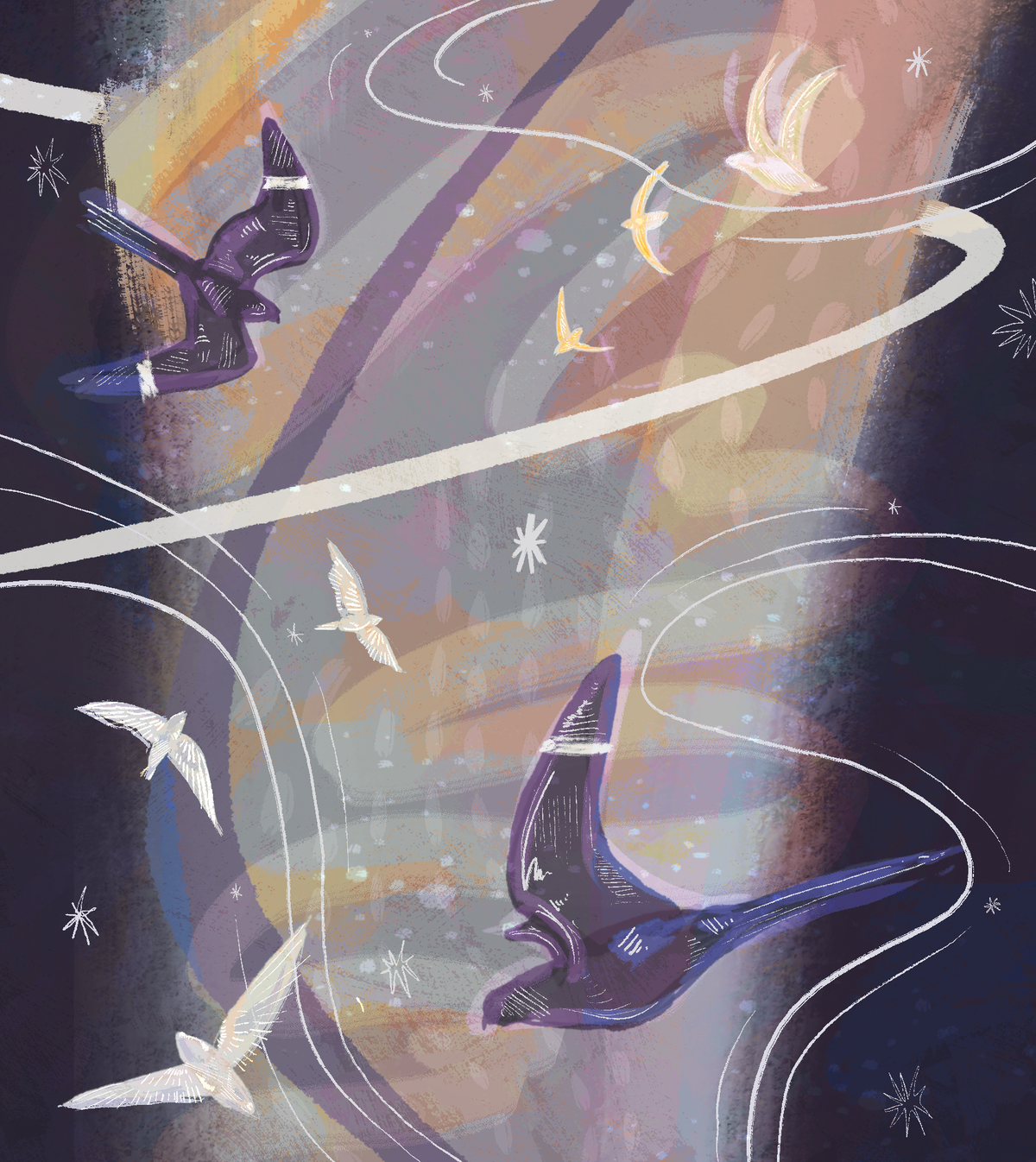
On warm summer evenings, nightfall doesn’t require an outer layer. In loose clothes and a gentle wash of sweat, a humid and darkening sky feels like a door opening—in the winter months this is more of a shuttering of windows. On this August night, I welcome this change. I look upwards to witness the atmosphere’s palette deepening slowly into indigos and rich purples. It’s an overture. Something big is coming.
A few days earlier, a chance encounter with a particularly friendly birdwatcher in the park provided me access to the city’s intense network of naturalists. (Thank you, Linda.) Thousands of others, with binoculars, spotting scopes, or naked eyes pointed towards Manhattan’s bird life, send their sightings to massive group chats, and now I’m plugged in. A rare European gull has been spotted at the reservoir. A Dickcissel has been frequenting a feeder in Riverside Park—unseasonable for this time of year! More birdwatching outings are being publicized than there are pigeons on the sidewalk.
Tonight, I find myself in a small group assembled at the edge of Central Park on one of these outings. Our goal today is to spot an uncommon and elusive bird: the Common Nighthawk. In many ways, this group walk feels like others. For one, I’m the youngest birder here by a handful of decades. This, I've grown accustomed to. With our shared appreciation of slow, long birdwatching walks, I’ve become well-versed in the ancient art of charming retirees; a skill that’s especially rewarding when, through a cutting-edge Swarovski scope that could only be purchased with an entire career’s worth of savings, you’re offered the perfect glimpse of a far-off bird. Secondly, I have the familiar weight of my frankensteined camera in my hands. It’s a clumsy combination of a Canon body and an unwieldy telephoto lens and it’s ready to snap photos of whatever wildlife we see. Still, this outing is unique in one key way: it’s nearly dusk.
Many birders will tell you that the best birding is done at the crack of dawn, when birds are most active and vocal. At my best, I follow this guidance. More often, I sleep in. Well rested now, I join the group, and we begin our early evening walk.
We traipse through Olmsted’s manufactured landscapes and manicured gardens, encountering an exciting array of wildlife. A Red-breasted Nuthatch scampers up and down the side of a tree looking for seeds it’s stored in crevices in the bark. A family of raccoons walks single-file towards a grove of oaks, stopping to look at us one-by-one. We point and ogle for a moment, and move on. They’re exciting, but they’re an amuse-bouche for the main course that we’re anticipating.
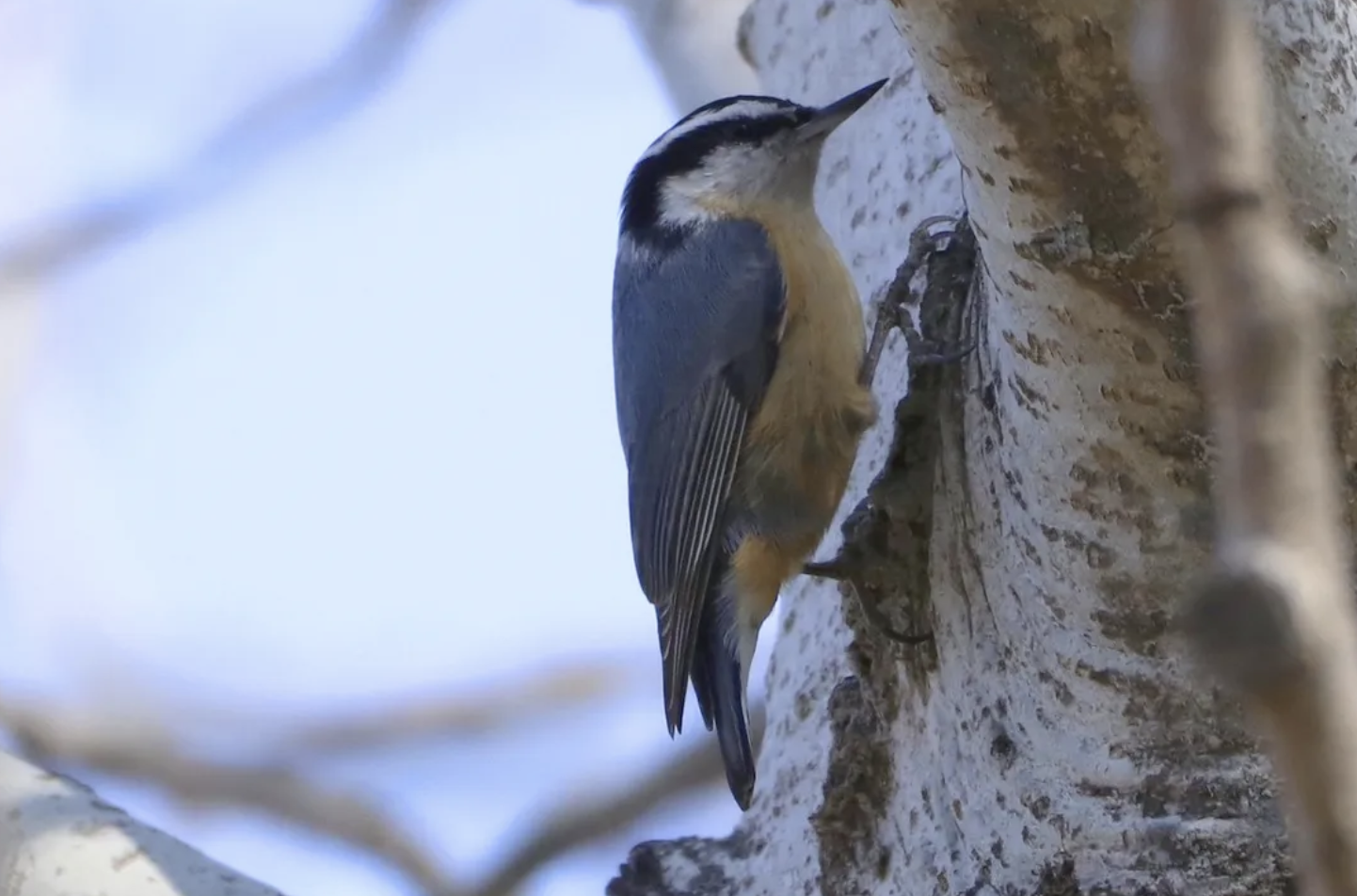
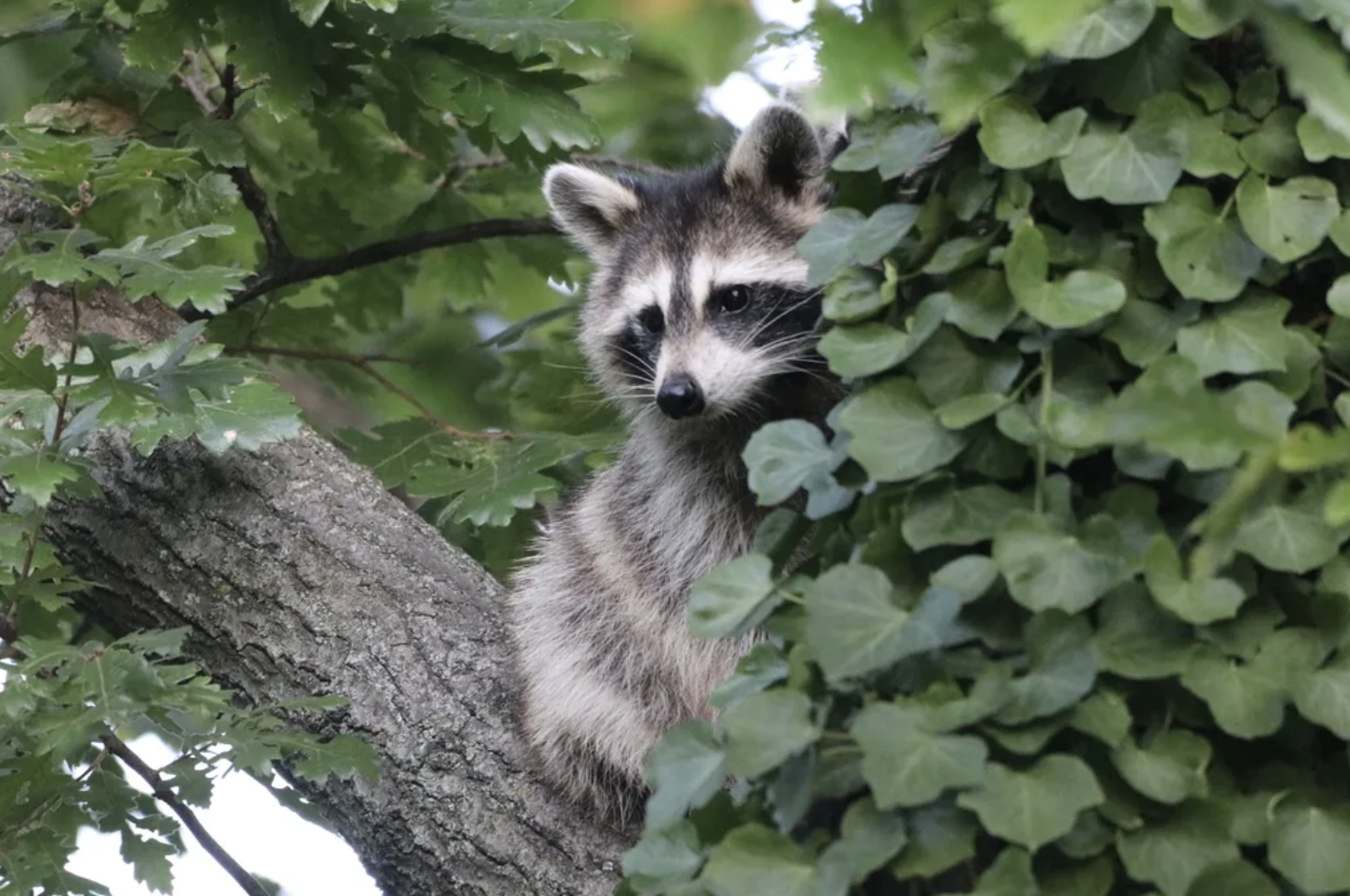
Ascending shallow slate stairs, we near our destination, marked by a glow in the distance. From behind the branches of broadleaf trees rises the stately Belvedere Castle. Cut from the same glacial schist it sits upon, its stone facade is pulled from the shadowy brush by bright spotlights. Up a flight of stairs tucked into the rock we climb to this most literal castle on the hill—one of the highest points in all of Central Park. A grand piazza overlooks the small pond below and provides nearly panoramic views of the city skyline from a perspective rarely reproduced on souvenirs. We plant here, hoping to bear witness to one of the city’s great natural phenomena.
It’s quiet at first. The noise of the urban landscape feels uncannily far away. The sun is low in the sky, outlining the few clouds above in gold. I look up. With my neck craned at the perfect angle, the buildings of the Upper East Side fall beyond the periphery of my vision and all I can see is a vast, empty expanse. I imagine I could be anywhere. The rest of the group follows suit, with eyes pointed skyward. No one speaks. We all wait for something to happen. I’m thinking nighthawk thoughts, imagining their long, bent wingspan, and the distinctive white bar across their wings, as if to manifest their presence.
Slowly, as if by some spontaneous generation from the atmosphere, something materializes. Our eyes focus on small black specks. Nighthawks? No. A few more seconds of observation reveals quick, bat-like wingbeats and erratic flight. Bat-like, but these are most definitely birds. Act I: The Chimney Swifts.
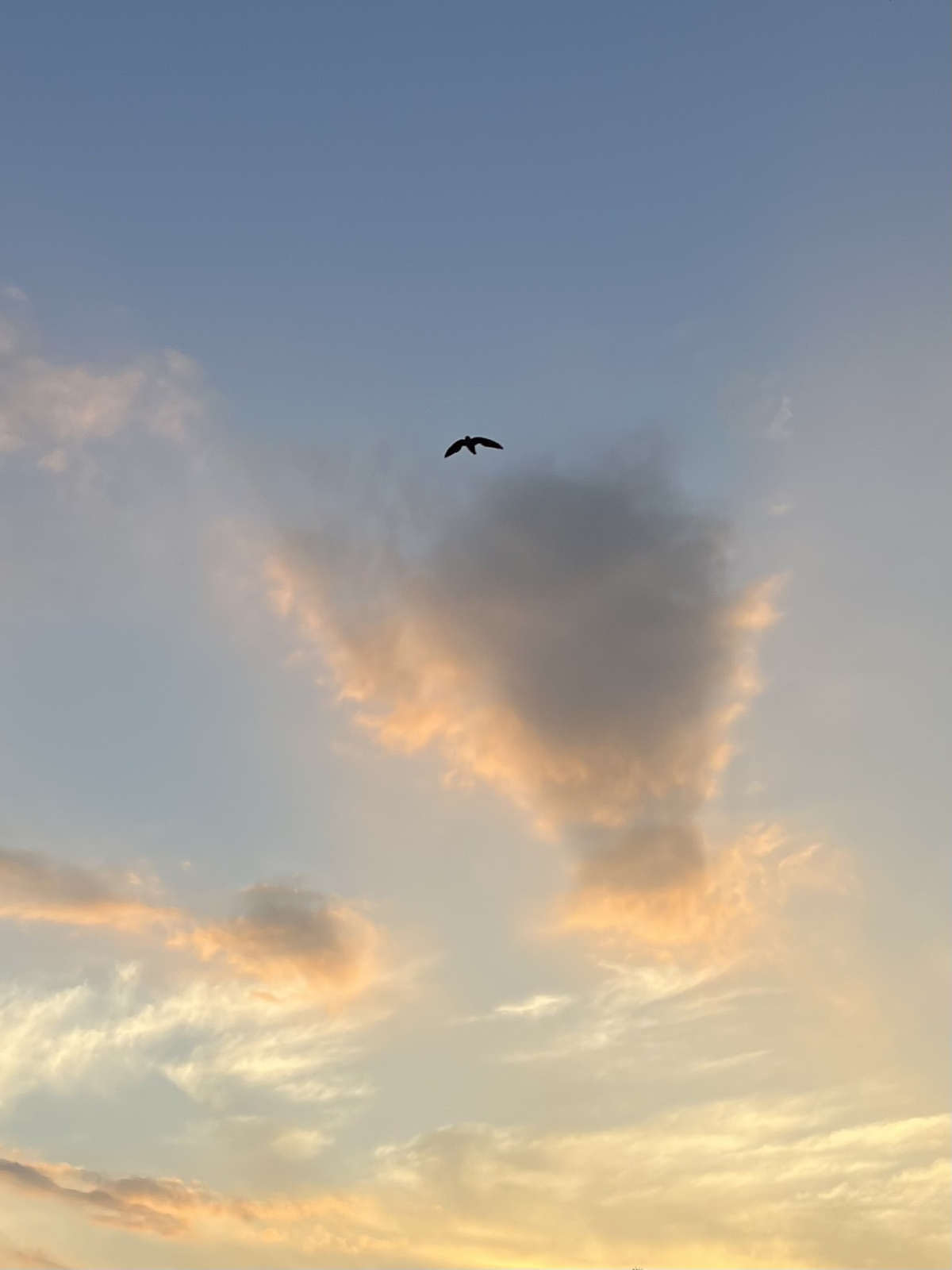
As a student I was taught to identify swifts by their distinctive shape—“a sickle and a cigar”—high up in the sky. The more we look from our vantage point atop the castle, the more we see. One, five, fifty, a hundred, and more and more. But unlike the hoards of Passenger Pigeons that are storied to have once blocked out the sun, this massive flock is nearly imperceptible. If I wasn’t looking for these tiny animals flying hundreds of feet up, I very well could have missed them entirely. Maybe the billionaires at the tops of the 59th Street skyscrapers get a better view.
Their taxonomic family, Apodidae, translates literally to ‘without feet’ because they were once believed to spend their entire lives on the wing, never landing. Unless you’re a chimney sweep or an avid spelunker, your chances of seeing them anywhere but the sky are slim. Chimney Swifts get their name from their tendency to roost on the insides of vertical, brick chimneys. Before the entire eastern seaboard was developed, they opted for the insides of ancient, hollowed tree trunks, but now those are all but felled. The last handful of remaining roosting trees used by Chimney Swifts are nearly religious in their significance to conservationists, and are fiercely protected. Luckily, these birds are adaptable. Chimneys seem to work well enough, and that’s exactly where they’re headed now, after one last bite to eat.
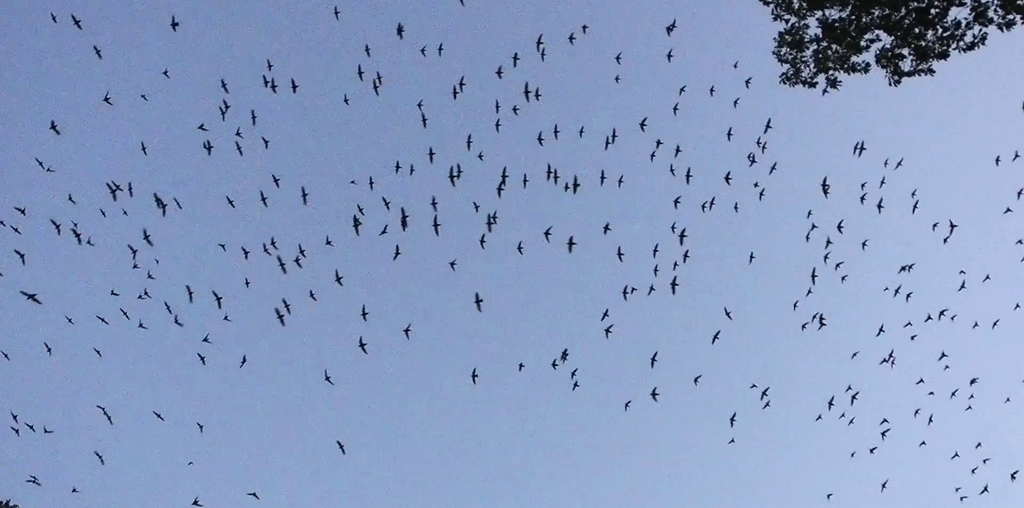
High up in the sky, even smaller than the swifts, flies another type of creature: insects—or as the Chimney Swifts see them, dinner. Much like bats, swifts are voracious aerial insectivores. This explains some of the similarities between their seemingly erratic flight patterns—skillfully swerving and diving like fighter jets, capturing flies, wasps, and beetles in their beaks, all while coordinating in chirrups and chirps. I may be imagining, but I think I can pull their high-pitched squeaks from the muffled din of the city.
The sun is very low in the sky now. As I remember that time is passing, I worry that I’ve seen no nighthawks. I stay close to the group, so as not to miss a loose gasp that the first sightings might spur. Another benefit of birding in packs is that one person’s knowledge becomes the knowledge of the group. My fears of missing out on Common Nighthawks are assuaged when I hear in a sage and whispered voice, “Chimney Swifts before the sun sets, nighthawks after.” Alright. Well, if the group doesn’t seem to be worried about missing out, I can safely return my undivided attention to the Chimney Swifts.
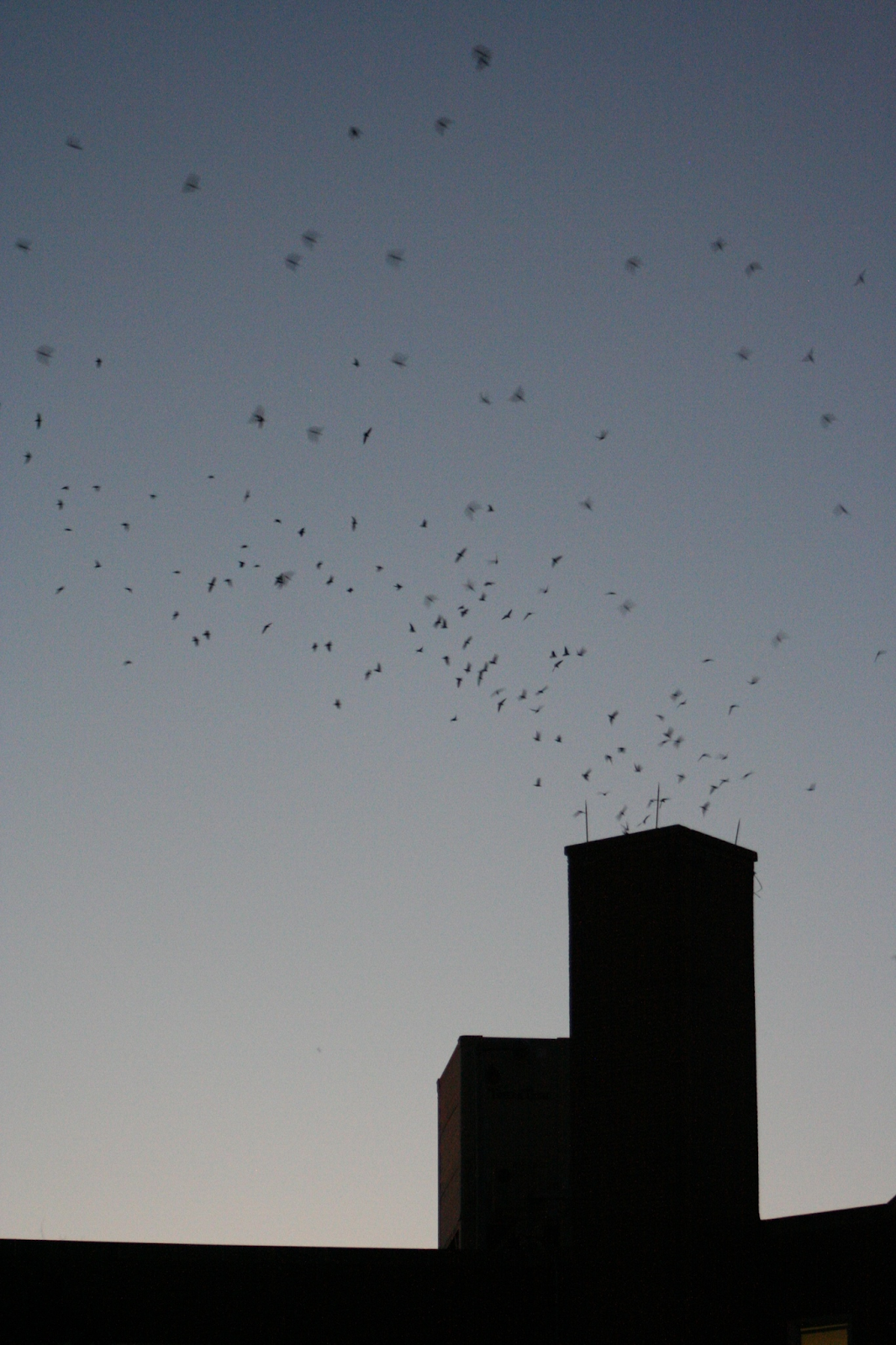
I can’t see the sun behind the buildings of the Upper West Side, but the orange hues in the sky are becoming increasingly vivid and I know they’ll soon fade to black. All at once, the Chimney Swifts flying in a large amorphous cloud above us begin to converge towards a single point on Central Park West, creating a triangle-shaped gradient in the sky. They’re headed to roost. When they reach their chimney of choice, somewhere along 83rd or 84th, they begin to plummet, descending in a feathery vortex. For a few minutes, their continuous sooty downwards spiral into the chimney looks almost like smoke emanating in reverse. It’s a dramatic spectacle that has occurred every night this summer, all without my notice. Am I really that oblivious? I fear that I’ve been shutting out beautiful things. I make a promise to myself to look up more.
And then, without ceremony, the swifts are gone. The sky is again vacant. I check my phone—7:31pm, sunset. I feel intrinsically bad for needing my phone to tell me that it’s nighttime while standing outside, but at least the swifts keep to a strict schedule. Swifts before the sun sets, nighthawks after. If they’re coming, now is the time. The anticipation is palpable among the group. Over the next few minutes, we wait with baited breath in silence. Pupils dilate searching for silhouettes in the twilight. Someone lets out a telltale gasp. Act II: The Common Nighthawks.
Two birds with long, thin wings come bounding in from the horizon in a straight line towards the castle as if they were storming it. Camera lenses immediately shoot upwards. The same attention that was just given to hundreds of swifts is now concentrated on these two birds, with two-foot wingspans and bouncing wingbeats that are powerful yet silent. They’re nearing.
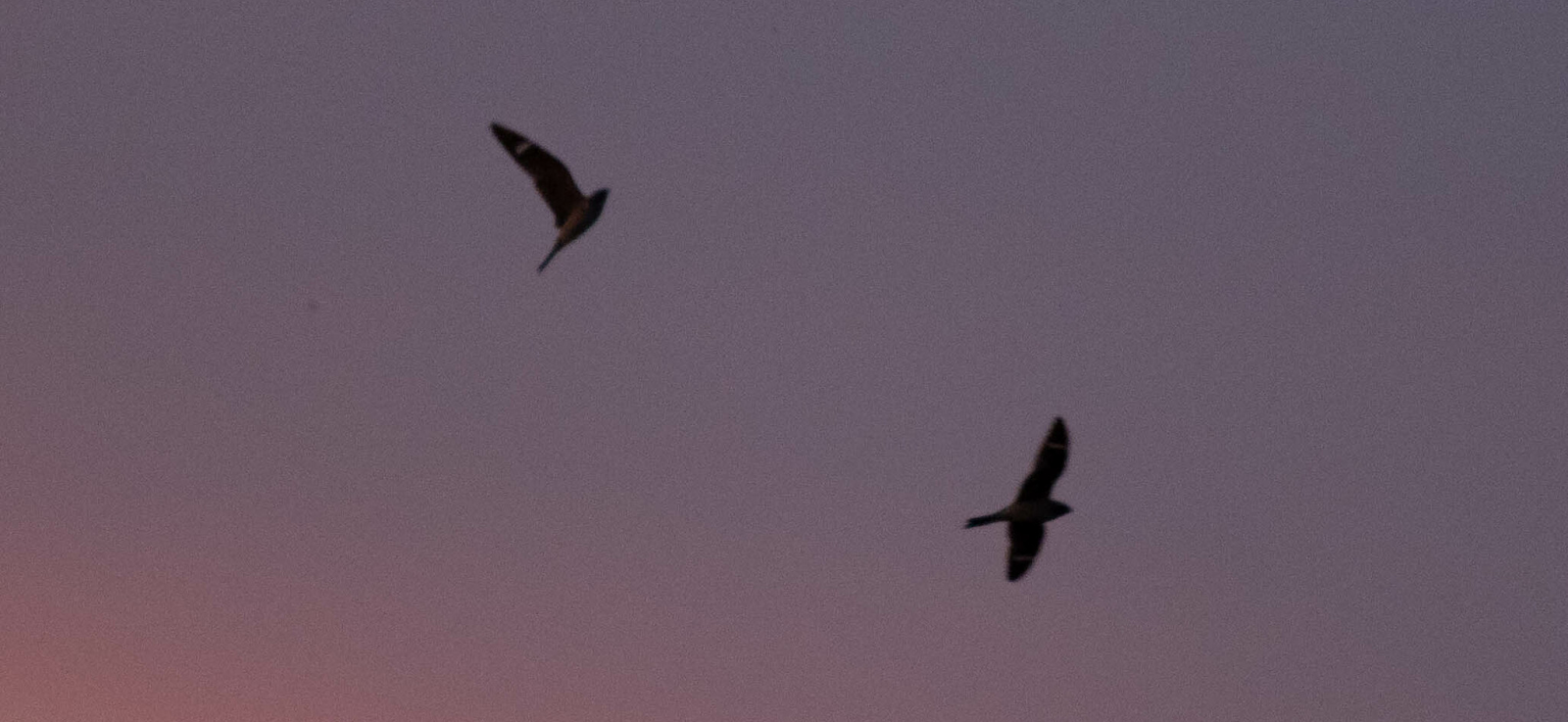
As they fly directly above us, the straight line of their approach becomes a scrambled midair acrobatics display. Predicting their next move is nearly impossible as they weave and dive and slow and soar. That, coupled with the increasing lack of light, makes quality photography a challenge. At some point I lower my camera and resign to watch without straining to capture the moment. It’s like two boomerangs trained by Olympic gymnasts, the deft and erratic way these birds navigate the sky.
Despite their much larger size, it’s hard not to draw similarities between them and the Chimney Swifts that were present a mere ten minutes ago, especially when their analogous behaviors exist for the same purpose: to eat flying insects. In better lighting, I might be able to see their wide beaks opening and shutting. Their feeding strategy goes like this: the bigger their odd-looking, fleshy mouths, the more likely they are to catch something in it. I think of the many insects for which this wet, pink maw is the last thing they see.
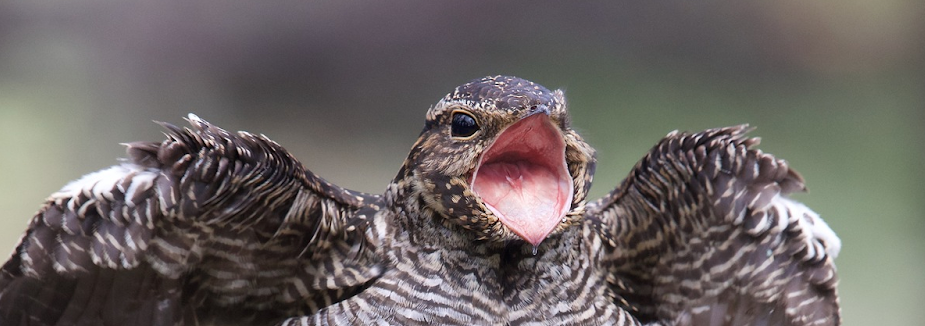
I feel an unexpected sense of gratitude to these insects, for their sacrifice in attracting the swifts and nighthawks with their protein-rich bodies, for being the reason this end of day has gathered an audience. I don’t know if or how insects experience fear, but if they do, I imagine it must be a perpetual state of being. If it isn’t a hundred tiny kamikaze Chimney Swifts threatening your existence, it’s the massive gape of the nighthawks, though never at the same time. Swifts before the sun sets, nighthawks after. It’s an odd split. Could it be that the two birds are optimized for different light levels? Do different insects take to the sky when the sun recedes? For two species so acutely dependent on successful hunts for survival, this partitioning feels unnaturally … polite.
It dawns on me: they’re sharing the dusk.
Maybe sharing is an oversimplification. If I didn’t care so much about being understood I could posit that they’re exhibiting behavioral niche partitioning by stratifying resource consumption. If either species were to extend their dinnertime into the other’s and feed simultaneously, each insect eaten by one species would mean one less insect for the other. Someone would get more, but someone would also inevitably get less. Still, this differs from a purely mutualistic relationship. It’s a win-win with a major caveat: Both species are limiting their consumption. In limiting themselves, both nighthawks and Chimney Swifts eliminate the possibility of detriment. They’re not sharing. What they’re doing is building a scenario where they can’t lose. They’re refusing competition.
At first, wrapping my head around the concept of ‘refusing competition’ is a little cumbersome. We humans have built systems where competition is king. Most everything I have—my apartment, my job, the food in my fridge—I have because someone else does not. They’re competitions I’ve won. These competitions inundate us with illusions of surplus and scarcity. The supermarket near me displays a bounty of produce year-round outside their store that never seems to wane. Similarly invariable, is the person in need sitting out front, asking for a meal. We seem to have limitless resources, but if we’re not working for them, we don’t have enough—a notion especially egregious in a country where over 30% of all food produced goes to waste.
But refusing competition, that feels fatal. If I don’t compete, I die. Extrapolate that to the nth degree and it’s clear that neither billionaires nor poverty exist by accident. Call it what you want: unchecked consumption, wendigo thinking, winning, domination. It always leads to loss, albeit unevenly distributed. Maybe, to reject competition is to acknowledge these ideas of scarcity and plenty as fallacies; that we do not have infinite resources, and still, we have enough. I exhale. That understanding feels a lot nicer.
Actually, there are things I can think of that we get to experience without inhibiting others: the knowledge we hold or the air we breathe. Economists might call these goods non-rivalrous, though to call these free, communal natural resources “goods” at all feels blasphemous. But what about the rivalrous needs? Space, food, jobs, they’re all finite, and still the birds have managed to find ways to compete less over them. What opportunities can we build to allow others as much as they need?
I try first to think on a scale that solves poverty worldwide and quickly find myself woefully unequipped to do that solo, regrettably. But maybe there are smaller ways we already divvy up like Chimney Swifts and nighthawks. Each time I enter or exit the subway, I join others in obeying the unwritten social norm of walking up and down the stairs on the right side, allowing everyone to take up the space they need and get where they’re going efficiently. Perhaps that counts. I wonder what additional choices we need to make to reduce competition elsewhere. How can I make change alone? How many people does it take to do something meaningful? It’s idealistic to hope that this mindset can help us to address any of our manufactured societal inequities on a global scale, sure—but if you look up at the right time of day, you can already see it working.
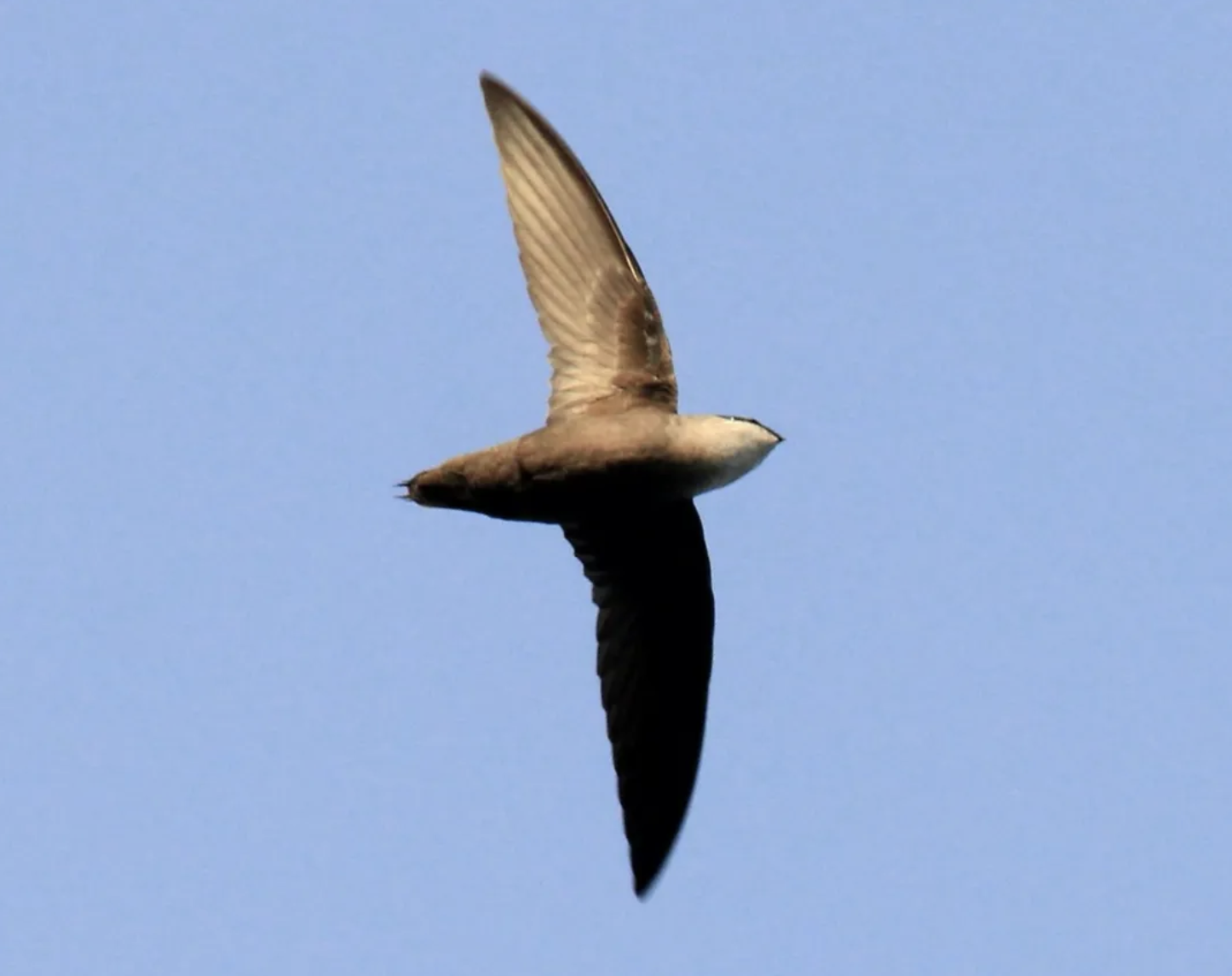
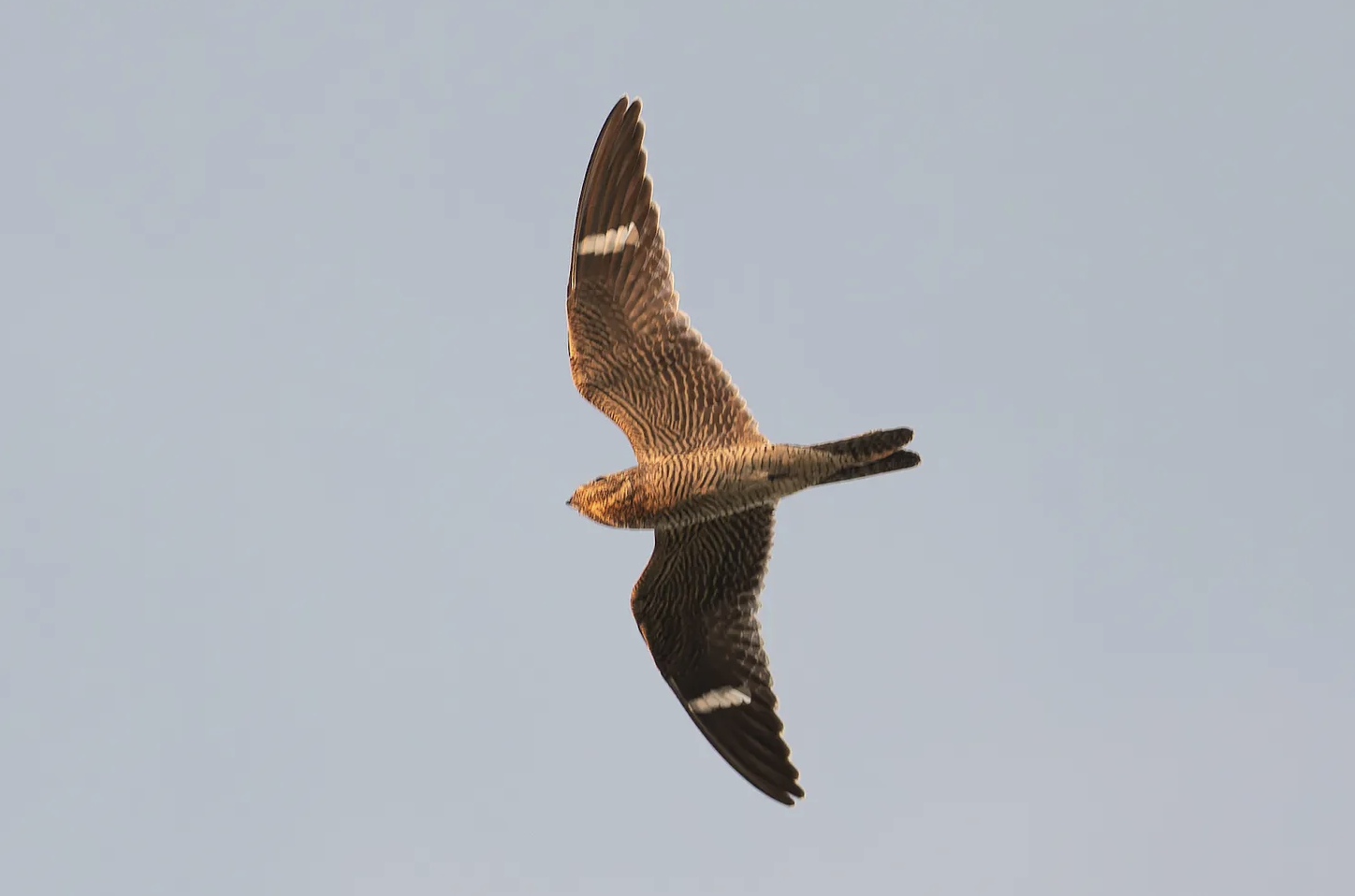
And swifts and nighthawks aren’t the only ones to do it either. Some warbler species are famous for partitioning trees. One species will only eat insects from the trunk, another from the lowest branches, while a third forages exclusively high up in the canopy. By reducing their domain, they reduce the odds of opposition.
Even bats, a third player in the nighttime aerial insect-eating space, have developed ways of sharing with nighthawks—not in when they eat, but what they eat. Bats navigate using high-pitched noises known as echolocation. Some insects with ultrasonic hearing can detect this sound and avoid becoming bat dinner, while non-eared insects are readily gobbled up by the flying mammals. On the other hand, nighthawks, with their eerily silent flight, have learned to primarily eat the hearing insects that the bats struggle to catch, with very little overlap on the menu.
Reptiles, fish, insects, and spiders too have all been documented splitting up the ways in which they utilize resources. It’s a global phenomenon. Through this lens, an animal world that’s often portrayed as harsh and unforgiving feels a lot more collaborative. It’s no mistake that we speak about ecologies as communities.
Of course, nature dominates too. The lion eats the gazelle. The nighthawk does, ultimately, devour the moth. In a vacuum, competition, albeit all-too-familiar, isn’t inherently good or bad. Plus one minus one equals zero, after all. What these birds show us, however, is that interactions don’t exist solely on a sliding scale of winners and losers. Just as much as we can choose to compete, we can also choose to split our dinner. We can make the choice to reject competition and devise different systems altogether.
It’s night now in Central Park. At the end of this avian spectacle—if you can call it an end—there is no finale, no recognition, no conclusion, just a long decrescendo into darkness. There comes a point where we can no longer see the Common Nighthawks flying above us, although we know they’re still there. I look among the rest of my birdwatching group. The night has quieted us. I wonder what they could be ruminating over internally. What other profundities did this show incite? On our return out of the park and back into the city’s lights, pleasantries and contact information are exchanged. We exit on West 81st. Home is a five-minute subway ride away, or half an hour by foot. I opt to walk. I want to look around a while longer.



